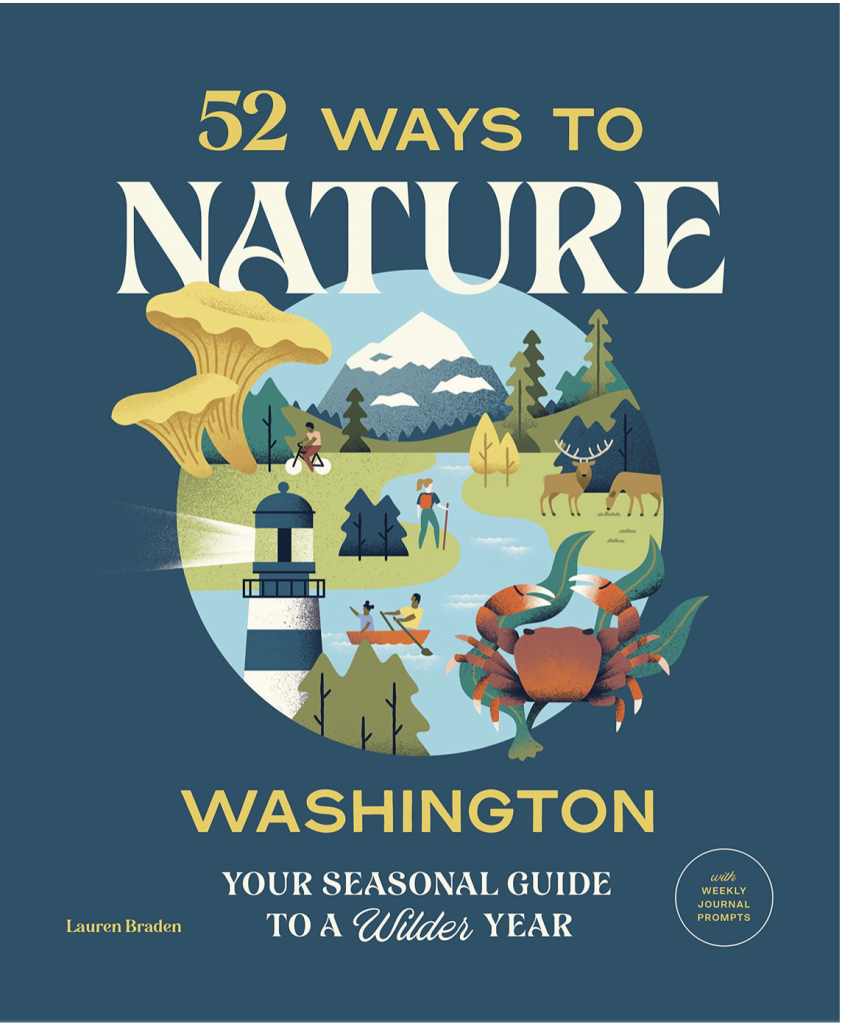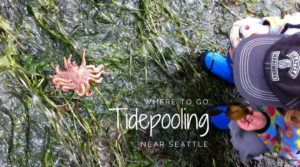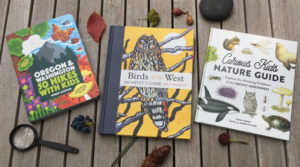Do you know what fruit-forward means? How about tannin, or terroir? Students, gather ’round.
You don’t have to be ultra-knowledgeable about the world of wine to enjoy visiting wine regions and tasting rooms. In fact, like we told you in Wine Tasting 101, the point of visiting wineries is to learn. Still, you might feel more comfortable starting your visits with a little wine knowledge under your belt.
Wine Tasting Basics
WINE JARGON: Common Terms to Know
You’ll probably hear these words pop up during a wine tasting, so here are some basic definitions as I have come to understand them.
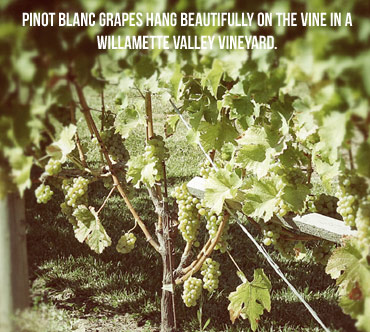 Vineyard. Easy enough: a yard full of grape vines, Tarzan-approved. It’s where they grow the grapes for making wine. A vineyard is not necessarily attached to a winery. Some vineyards only grow the grapes, then sell the grapes to local wineries.
Vineyard. Easy enough: a yard full of grape vines, Tarzan-approved. It’s where they grow the grapes for making wine. A vineyard is not necessarily attached to a winery. Some vineyards only grow the grapes, then sell the grapes to local wineries.
Estate. You will sometimes see this on wine labels. In the wine world, an estate-bottled wine means that 100% of the grapes used were grown in the winery’s own vineyards.
Terroir. Nope, this is not a small, nippy winery dog. This word is a little tricky in both pronunciation and meaning. First, it’s pronounced tear-wahr, and it loosely translates to “a sense of place.” This word is used to sum up the many small physical differences that set a vineyard apart from others–it’s soil, subsoil, drainage, slope, sunlight, altitude, climate, microclimate, *nano* climate… you get the picture. These climatic differences influence the wine in many ways.
Reserve. Think of it this way – the winemaker wants to share something special with you–select grapes, select aging, select wine. That said, there’s no U.S. regulation stating when the term can be used, so Reserve can be as subjective as any other marketing word, like Quality or Natural. When it comes to the tasting room, a Reserve wine might garner an additional tasting fee, so ask what makes it so special before you pluck down $5 for a few tiny gulps.
Vintage. If a bottle has a year on it, it means the grapes were primarily grown and harvested in that year. Unless you’re talking about Champagne or Port, having the year on the bottle doesn’t necessarily signify anything great is going on inside that bottle. But it makes for nice conversation. Most wine enthusiasts agree that 2008 vintage for Oregon pinot noir is superb.
Acidity. Many factors go into the acidity of the wine, but the end result is too much acid and you have a tart, sour wine. Too little acid and the wine is flat and boring.
Dry. Opposite of sweet. I know, I thought dry was the opposite of wet too. Yet, here we are.
Oaked. This is when wine has been subjected to some serious oak exposure and subsequently has picked up some complex buttery, toasty and/or vanilla flavors. How does wine get oaked? Some wines are aged in oak barrels, usually French oak, or alternatively oak chips are added at some point in the fermentation or aging process.
Full-bodied. This term is often used when a wine has some complex flavors going on, and it evokes rich texture and robustness. Cabernet Sauvignon is an example of a full-bodied red wine. At the opposite end of the spectrum are light-bodied wines.
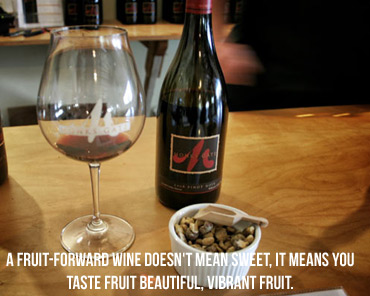 Fruit-forward. When you taste a fruit-forward style wine, you get fruit above any other flavors and nuances that may come from oak or terroir. Some will lack the complexity and layers of wines coaxed to completion in toasted oak barrels, but that doesn’t mean they’re boring–some of Oregon’s best Pinot Noirs are fruit-forward.
Fruit-forward. When you taste a fruit-forward style wine, you get fruit above any other flavors and nuances that may come from oak or terroir. Some will lack the complexity and layers of wines coaxed to completion in toasted oak barrels, but that doesn’t mean they’re boring–some of Oregon’s best Pinot Noirs are fruit-forward.
Tannin. Tannin is a compound found in grape skins, seeds and stems that gives red wine its texture, form and grip, as well as its staying power in a cellar. White wines are fermented primarily from the juice and therefore don’t usually have tannins. The exception is when they are aged in oak, in which case they can pick up the smoother tannins from the wood. When tasting wine, notice that tannin is something you feel more than taste.
Residual Sugar. All wines have some residual sugar, and the more it has, the sweeter the wine is going to be. The term refers to the amount of sugar in the wine that doesn’t get turned into alcohol during fermentation, and it’s expressed as a percentage. A dry wine typically has less than 2.5% residual sugar.
Finish. This is the last flavor or impression a wine leaves in your mouth after you swallow (or spit). Its length is how long a wine’s finish hangs around in your mouth, though these words are used interchangeably sometimes.
Fermentation. To put it simply: yeast eat the sugar in the grape juice and make alcohol. The fermentation process may occur in stainless steel tanks, in an open wooden vat, or even inside the wine bottle itself.
On the Skins. This refers to how red wine gets its color and tannins–let it ferment on the squished skins!
Legs. Legs is what you get when the wine clings to the inside of the glass as you swirl it around looking clever. More clearly defined, legs means more alcohol or maybe more sugar, or possibly just really clean glasses.

